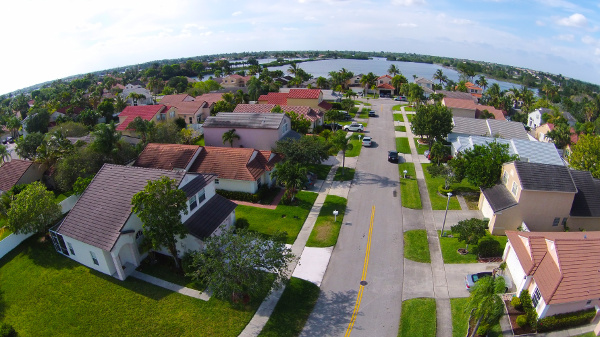What’s Ahead For Mortgage Rates This Week – October 3, 2022
 Last week’s economic news included readings on home prices, pending home sales, and inflation. The University of Michigan released its monthly reading on consumer sentiment and weekly readings on mortgage rates and jobless claims were also published.
Last week’s economic news included readings on home prices, pending home sales, and inflation. The University of Michigan released its monthly reading on consumer sentiment and weekly readings on mortgage rates and jobless claims were also published.
S&P Case-Shiller Home Price Indices: Home Price Growth Slower in July
According to S&P Case-Shiller’s national reading for July home prices, home price growth slowed by -2.90 percent in July as compared to +3.00 percent growth in June. This reading supported analysts’ expectations of a cooling housing market after months of rapidly rising home prices in many areas. The S&P Case-Shiller 20-City Home Price Index, which is a benchmark report used by real estate professionals, also posted slower home price gains for July. All 20 cities reported slower home price gains year-over-year in July.
The top three cities in the 20-city index for July with Tampa, Florida posting a year-over-year home price gain of 31.80 percent; Miami, Florida followed closely with a year-over-year home price gain of 31.70 percent and Dallas, Texas reported a year-over-year home price gain of 24.70 percent.
Mortgage rates approached seven percent last week and increased affordability concerns for would-be home buyers. Pending home sales declined by 2.00 percent in August; Analysts expected pending sales to decrease by 1.40 percent.
Mortgage Rates Rise, Jobless Claims Fall
Freddie Mac reported higher average mortgage rates last week as the rate for 30-year fixed-rate mortgages rose by 41 basis points to 6.70 percent; the average rate for 15-year fixed-rate mortgages rose by 52 basis points to 5.96 percent. Rates for 5/1 adjustable rate mortgages rose by 33 basis points and averaged 5.30 percent. Discount points
for 30-year fixed-rate mortgages averaged 0.90 percent; discount points for 15-year fixed-rate mortgages averaged 1.30 percent and points for 5/1 adjustable rate mortgages averaged 0.40 percent.
Initial jobless claims fell to 193,000 claims filed as compared to the previous week’s reading of 209,000 first-time claims filed. Analysts predicted a reading of 215,000 initial jobless claims filed.
The University of Michigan’s Consumer Sentiment Index for August reported an index reading of 58.60 as compared to the expected reading of 59.50 and July’s index reading of 59.50. Decreased consumer sentiment is related to high inflation and rising rates for mortgages and consumer credit.
What’s Ahead
This week’s scheduled economic reports include readings on construction spending, public and private sector job reports, and the national unemployment rate. Weekly readings on mortgage rates and jobless claims will also be released.

 The S&P Case-Shiller Home Price Indices for July showed a sharp slowing in home price growth from June to July. National home price growth slowed from June’s reading of 18.7 percent year-over-year growth to 16.10 percent home price growth in July. This reading translated to an 0.20 percent loss in month-to-month home price growth.
The S&P Case-Shiller Home Price Indices for July showed a sharp slowing in home price growth from June to July. National home price growth slowed from June’s reading of 18.7 percent year-over-year growth to 16.10 percent home price growth in July. This reading translated to an 0.20 percent loss in month-to-month home price growth. Last week’s economic reporting included readings on housing markets, building permits issued, housing starts, and sales of previously-owned homes. The Federal Reserve released its scheduled monetary policy statement and gave a press conference with Fed Chair Jerome Powell. Weekly readings on mortgage rates and jobless claims were also published.
Last week’s economic reporting included readings on housing markets, building permits issued, housing starts, and sales of previously-owned homes. The Federal Reserve released its scheduled monetary policy statement and gave a press conference with Fed Chair Jerome Powell. Weekly readings on mortgage rates and jobless claims were also published.